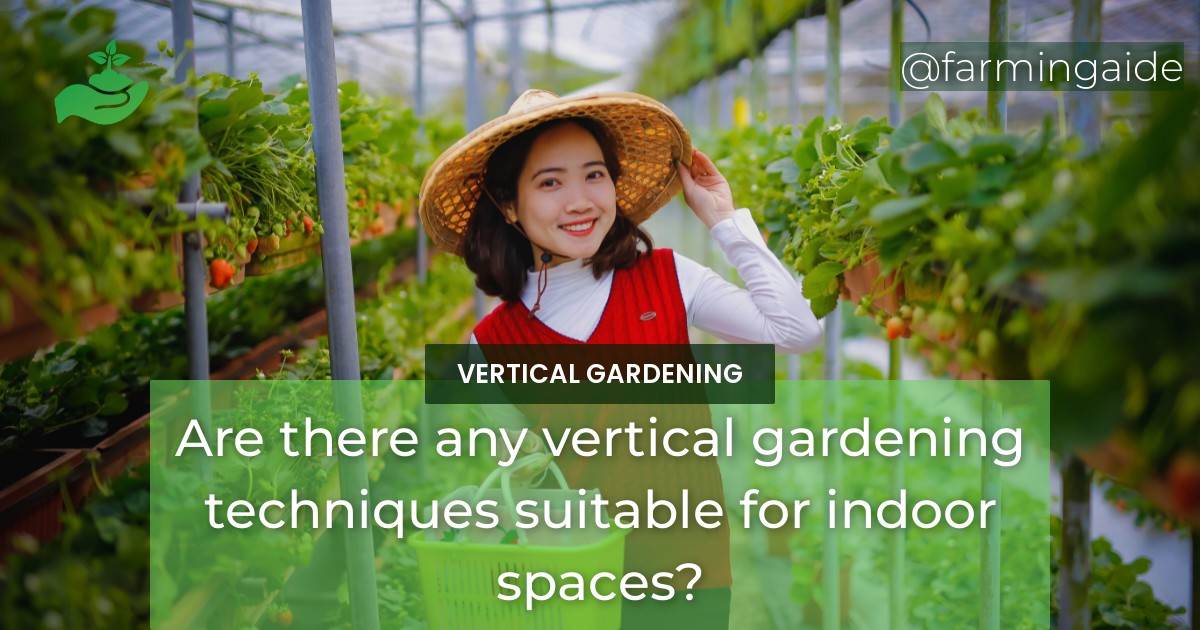Indoor vertical gardening techniques are becoming increasingly popular for those with limited outdoor space or who want to bring nature indoors. Vertical gardening is an innovative way to grow plants in small areas by stacking them vertically, making use of the available space. In this article, we will explore the various techniques for indoor vertical gardening that are suitable for limited spaces.
Benefits of Indoor Vertical Gardening
Indoor vertical gardening offers several benefits, including:
Maximizing limited space
Vertical gardening allows you to utilize limited indoor space, making it possible to grow more plants in smaller areas. This is especially beneficial for those living in apartments or homes with limited outdoor space.
Improving indoor air quality
Indoor plants are known for their air-purifying properties. Plants absorb carbon dioxide and release oxygen, thereby improving indoor air quality and reducing the concentration of harmful pollutants in the air.
Enhancing aesthetic appeal
Vertical gardens can enhance the aesthetic appeal of any indoor space. They add a touch of greenery, color, and texture to walls, corners, and other small spaces.
Indoor Vertical Garden Options
Here are some indoor vertical garden techniques that are suitable for limited spaces:
Wall-Mounted Vertical Garden
A wall-mounted vertical garden is a great option for those with limited floor space. It involves attaching planters to a wall using brackets, hooks, or frames. This technique is ideal for small indoor spaces like kitchens, living rooms, and bedrooms.
Hanging Planters
Hanging planters are another indoor vertical gardening technique that is ideal for small spaces. They can be hung from the ceiling or mounted on walls using hooks or brackets. This technique is ideal for growing trailing plants or vines.
Tiered Shelving Units
Tiered shelving units are a great option for those with limited floor space. They involve stacking shelves on top of each other and placing plants on each tier. This technique is ideal for growing a variety of plants in small spaces like balconies, patios, and living rooms.
ALSO READ
Indoor Plant Selection and Care Tips
Best Indoor Plants for Vertical Gardening
When selecting plants for indoor vertical gardening, it is important to choose those that are suitable for indoor environments. Some of the best indoor plants for vertical gardening include:
- Spider plant
- English ivy
- Pothos
- Peace lily
- Snake plant
Proper Lighting and Watering
Proper lighting and watering are essential for the growth and health of indoor plants. Most indoor plants require moderate to bright indirect light and regular watering. It is important to ensure that the soil is moist but not waterlogged.
Soil and Fertilizer Requirements
Indoor plants require well-draining soil that is rich in nutrients. Adding organic matter like compost and fertilizers like fish emulsion can help improve soil quality and provide essential nutrients to plants.
Vertical Gardening in Limited Light Conditions
Indoor vertical gardening can be challenging in limited light conditions. However, there are some techniques that can help:
Choosing low-light plants
Choosing plants that are suitable for low-light conditions can help ensure their survival. Some of the best low-light indoor plants include snake plant, pothos, and ZZ plant.
Supplementing with artificial lighting
Supplementing natural light with artificial lighting can help ensure the growth and health of indoor plants. LED grow lights are a great option for indoor vertical gardening as they are energy-efficient and emit little heat.
Placing near windows or natural light sources
Placing indoor plants near windows or other natural light sources can help ensure they receive adequate light. It is important to avoid placing plants in direct sunlight as this can lead to leaf burn.
ALSO READ
Maintenance and Troubleshooting
Proper maintenance and troubleshooting are essential for the growth and health of indoor plants. Here are some tips:
Pruning and trimming
Pruning and trimming are essential for maintaining the shape and size of indoor plants. It is important to use sharp, clean tools to avoid damaging the plants.
Addressing pests and diseases
Indoor plants are susceptible to pests and diseases. It is important to identify and address any issues promptly to prevent them from spreading.
Replacing plants and soil as needed
Replacing plants and soil as needed is essential for the growth and health of indoor plants. It is important to monitor plants for signs of stress and replace them as needed.
Creative Design Ideas
Indoor vertical gardening offers endless design possibilities. Here are some creative design ideas:
Incorporating color and texture
Incorporating plants with different colors and textures can add visual interest to indoor vertical gardens. Mixing trailing and upright plants can also add depth and dimension to the design.
Mixing and matching plant varieties
Mixing and matching different plant varieties can create a unique and personalized indoor vertical garden. It is important to ensure that the plants have similar care requirements to ensure their survival.
Using unique containers or repurposed materials
Using unique containers or repurposed materials can add a touch of creativity and personality to indoor vertical gardens. Some examples include mason jars, teacups, and wooden pallets.
Can Indoor Vertical Gardening Techniques Help Prevent Pests and Diseases in Plants?
Indoor vertical gardening techniques are effective for preventing pests and diseases in vertical gardens. By utilizing natural pest repellents and maintaining proper airflow, vertical gardens can reduce the risk of infestations and infections. Additionally, keeping plants healthy and well-maintained is essential for preventing pests and diseases in vertical gardens.
Conclusion
Indoor vertical gardening is a great option for those with limited outdoor space or who want to bring nature indoors. With the right plant selection, care, and design, a beautiful and thriving indoor vertical garden can be achieved.
RELATED ARTICLES:


